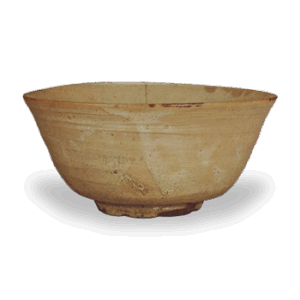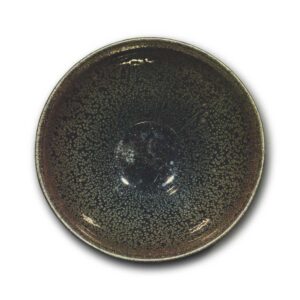
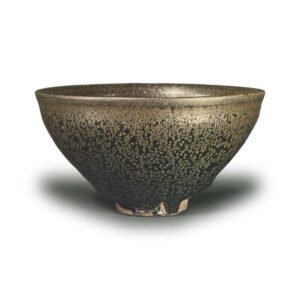
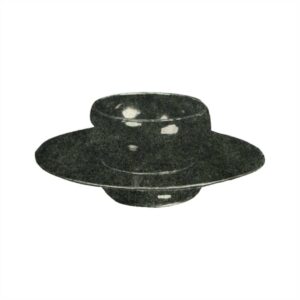
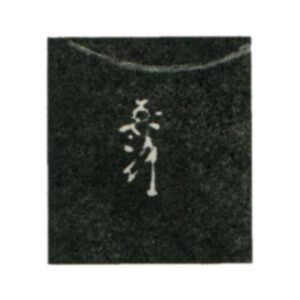
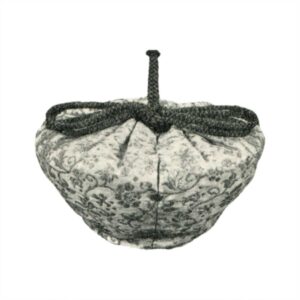
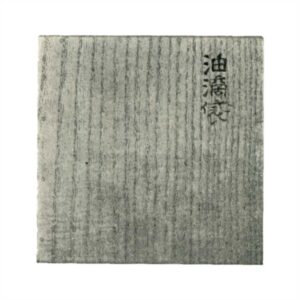
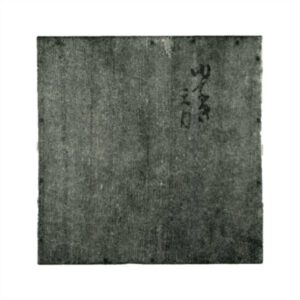

major superstitious object (e.g. museum, museum of arts, etc.)
important cultural properties
Attachments
Tenmokudai (stand), Amagasaki-dai (stand), Sen no Rikyu’s seal, clothing, small peony on white ground, old gold column
Inner box, By Sen no Rikyu, calligraphy on paulownia wood
Outer box, By Matsudaira Fumai, with calligraphy in paulownia wood
Clothing box, By Matsudaira Fumai, with calligraphy in paulownia wood and white lacquer
Traditions and Attributions
Oribe Furuta – Toshikatsu Doi Otakashira – Nagayasu Kinoshita Izumimori – Fumai Matsudaira – Unshu Matsudaira Family
Listed in
Collection of the Unshu Collection, Kokin Meibutsu Ruju Meibutsu Meimono Meibutsu Meiri-Kensho, Osaki-sama Gozai Otsukuroi Goteppan Matsudaira Fumai Den, Yukisho Meikikikan
Dimensions
Height: 6.5-7.0 cm, Bowl diameter: 12.4 cm, Base diameter: 4.0 cm, Height: 0.7 cm, Weight: 272 g
This piece was owned by Oribe Furuta in the old days, and passed from Oribe Doi to Izumi-no-Mamoru Kinoshita, and then to Lord Fumai Matsudaira, and became a great masterpiece. It was returned to the possession of Lord Matsudaira Fumai, and became a great masterpiece. The box is written by Rikyu on the front of the inner box, and we do not know if this was done at Oribe’s request. Therefore, it is highly prized.
The clay is of Kengyō’s unique reddish color, and the base is relatively large and slightly open throughout. The glaze is applied generously. Some of the glaze extends to the base of the base and was later rubbed off. The deep blue-black glazed surface is covered evenly with silvery-brown oil droplets, which are very beautiful. The oil droplets are nearly circular in shape, indicating that the fire was stopped in the most favorable condition. Most tenmoku from kengyō are covered with a covering around the rim, but this tenmoku is not accompanied by such a covering. It has a nunzakidai (stand) with the Rikyu zaiban (seal of approval) on it, and can be said to be an authentic piece of art.
Bottom (part) Rikyu’s seal
Amagasaki-dai Rikyu’s seal
Inner box White paulownia wood, written by Sen no Rikyu
Outer box White paulownia wood, written by Matsudaira Fumai
Two oil-drop tenmoku boxes and covers
Covers White ground with small peony and old gold latticework
Cover box White paulownia wood, written by Matsudaira Fumai




